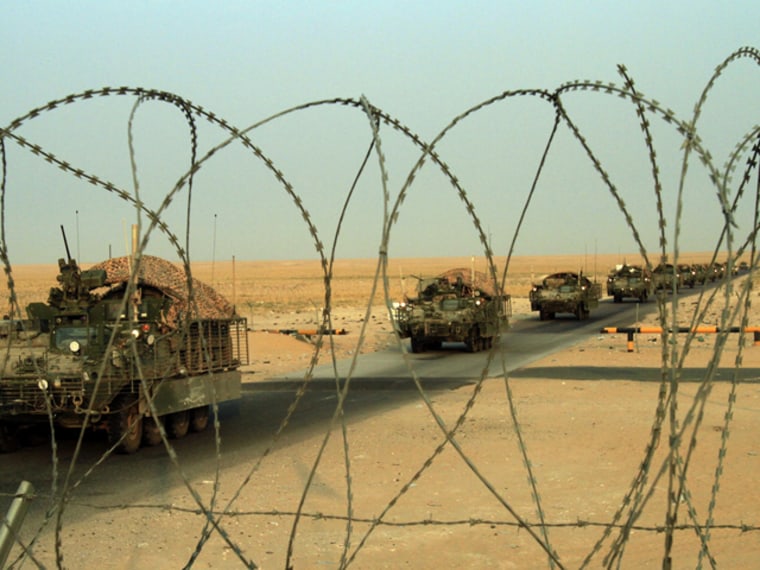For the family of Army Sgt. Mark Cofield, the war in Iraq is far from over.
"Mark was my rock," Mark' s sister, Sara Cofield, said in an interview with the Colorado Springs Gazette. "He was my brother, he was my world. He raised me."
She said it hurt to breathe when she found out that her brother had been killed in Baghdad last month.
Cofield, 25, died July 17 from injuries sustained in a non-combat related incident, according to icasualties.org. He was the latest of 57 American troops to die in Iraq in the year since the United States formally ended its combat mission there and just months before the scheduled withdrawal of all its troops.
In 2011 alone, 44 U.S. troops have died, according to icasualties.org, an independent group that tracks American casualties in Iraq and Afghanistan. They included four other U.S. soldiers who also lost their lives in July, all on the battlefield. In June, the U.S. suffered its deadliest month in Iraq since 2008, with 15 service members dying.
End of combat?
Officially, U.S. combat operations ended in Iraq on Aug. 31, 2010, two weeks after all combat troops left the country on Aug. 18, 2010. Operation Iraqi Freedom led to the overthrow of dictator Saddam Hussein's regime but now has lasted more than eight years and left more than 4,400 U.S. troops and tens of thousands of Iraqis dead.
At the time of the pullout, President Barack Obama released a statement calling the troops' withdrawal a "milestone in the Iraq war."
"I hope you'll join me in thanking them, and all of our troops and military families, for their service."
At the height of U.S. involvement, nearly 250,000 troops operated throughout the country, while by the end of August 2010, around 50,000 Americans remained in the country in a non-combat role.
But that non-combat role is a constantly evolving one.
U.S. forces continue to battle militants The U.S. military carried out two unilateral air strikes in Iraq in June that did not involve Iraqi forces, both of them in self-defense to prevent attacks, the main U.S. military spokesman in Iraq said.
The airstrikes are another sign of how the United States is being forced to sometimes respond directly to militant threats even a year after it formally ended its combat mission.
The United States is due to withdraw all of its 46,000 forces from Iraq by the end of the year unless negotiations with Baghdad end with an agreement to keep some forces there on a slimmed-down training mission.
Legally binding guarantees for remaining U.S. forces are expected to be part of any such deal, but whether that will include the right for U.S. forces to defend themselves is unclear.
Although violence in Iraq is down from the height of the sectarian killings in 2006-07, a spate of recent attacks has shown that the militant threat could still pose a serious challenge to Iraqi forces if all U.S. troops depart.
Suicide bombers, car bombs and roadside explosives hit more than a dozen Iraqi cities and towns on Monday, killing around 70 people, in the highest number of killings on a single day in Iraq this year.
The U.S. expressed concern at the surge of violence just months before the scheduled withdrawal, reported.
"The Iraqis themselves have more capacity than they did have, but they've got to exercise it," said Secretary of State Hillary Rodham Clinton, according to the Times.
